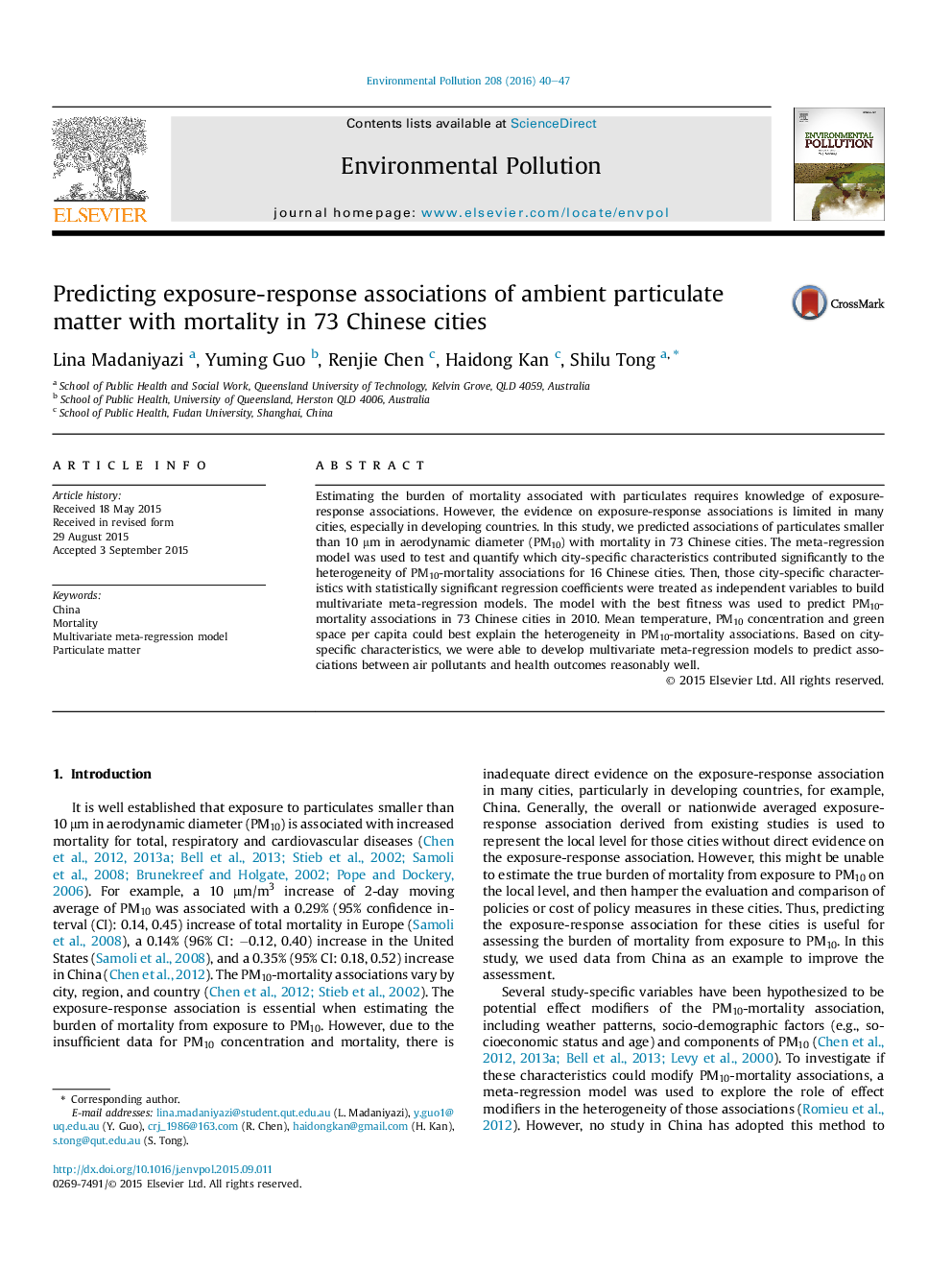| Article ID | Journal | Published Year | Pages | File Type |
|---|---|---|---|---|
| 6316546 | Environmental Pollution | 2016 | 8 Pages |
Abstract
Estimating the burden of mortality associated with particulates requires knowledge of exposure-response associations. However, the evidence on exposure-response associations is limited in many cities, especially in developing countries. In this study, we predicted associations of particulates smaller than 10 μm in aerodynamic diameter (PM10) with mortality in 73 Chinese cities. The meta-regression model was used to test and quantify which city-specific characteristics contributed significantly to the heterogeneity of PM10-mortality associations for 16 Chinese cities. Then, those city-specific characteristics with statistically significant regression coefficients were treated as independent variables to build multivariate meta-regression models. The model with the best fitness was used to predict PM10-mortality associations in 73 Chinese cities in 2010. Mean temperature, PM10 concentration and green space per capita could best explain the heterogeneity in PM10-mortality associations. Based on city-specific characteristics, we were able to develop multivariate meta-regression models to predict associations between air pollutants and health outcomes reasonably well.
Keywords
Related Topics
Life Sciences
Environmental Science
Environmental Chemistry
Authors
Lina Madaniyazi, Yuming Guo, Renjie Chen, Haidong Kan, Shilu Tong,
